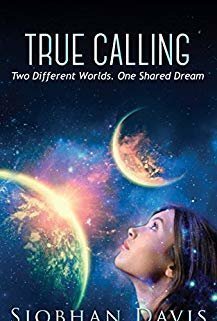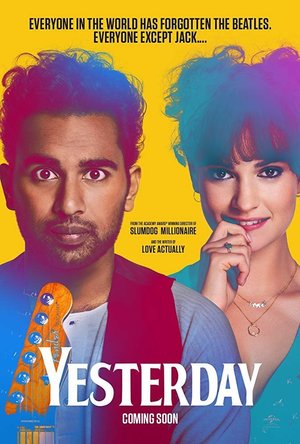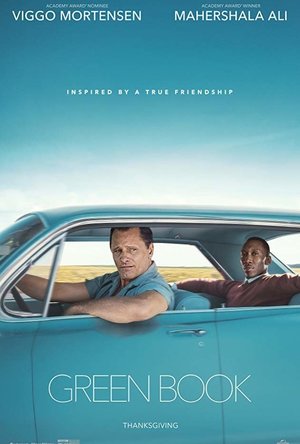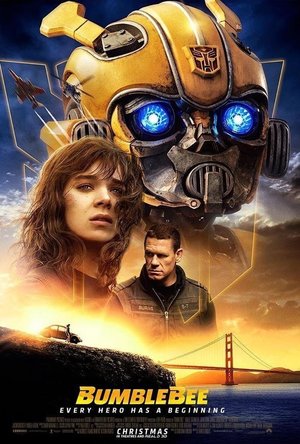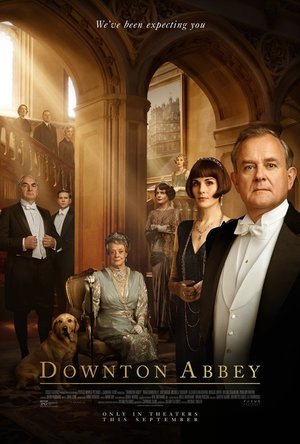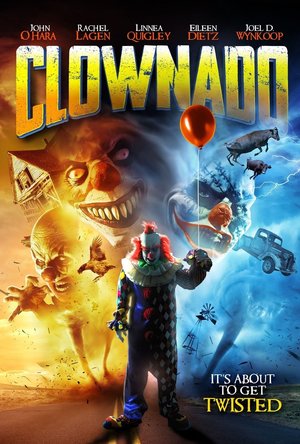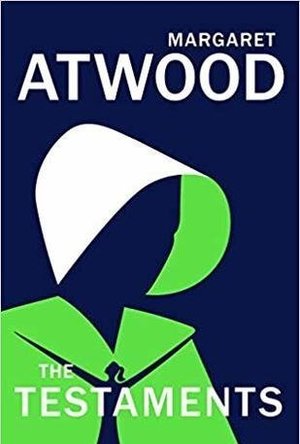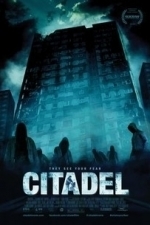Search
Search results
Eleanor Luhar (47 KP) rated True Calling in Books
Jun 24, 2019
This was free in the Amazon Kindle store and I thought it looked pretty cool, so I downloaded it a few months ago. Despite being just 369 pages long, it took me a shockingly long time to read...
Ariana is now a citizen of Novo, where only the fittest humans were transported after the near-destruction of planet Earth. From very early on, we are introduced to Zane through Ari's dreams - but she has no idea who he is, or why she can see him in her sleep. We don't discover Zane's identity until much further through the book.
A matchmaking system is set up for all eligible young people, taking the name of "The Calling." Ari realises her feelings for the popular Cal Remus, and is luckily given the opportunity to be matched with him. The whole deal with "The Calling" reminds me very much of books such as The Selection and ?Matched.
Things seem to be going pretty well (despite the fact that Ariana is appalled at the way the government is choosing who can love who) until Ariana's father disappears and leaves behind some vital information. Suddenly, Ari isn't sure whether Cal can really be trusted, and Zane is beginning to contact her directly through her mind.
A small section of this book takes place back on Earth, told from Zane's perspective. He's working for an underground resistance movement, and is still infatuated with Ariana. He gets training to try and help him communicate with her, and Ariana's father has bestowed a dying wish upon him; to keep Ari away from Cal.
Things get pretty complicated, and the love triangle is both predictable and not at the same time. Ari doesn't remember how much she loved Zane, but can sense that there was some emotion there. Cal's father is clearly opposed to his son being associated with Ariana, and is also a despicable man in himself. There are even hints as to Cal being untrustworthy, which was something I didn't actually expect.
It's kind of a typical dystopian YA novel, but it does have some good twists. My main problem was with the lack of time-keeping; I couldn't tell whether things happened over a course of a few days or multiple months. Even if the time-frame was specified in some places, it still didn't feel like it passed in the intended way.
Another thing is that the characters spoke in a rather unnatural language. Extravagant words were unnecessarily used, coupled with overly-simple phrases. It just sounded wrong.
It took me a long time to read a relatively short book, which is always a bad sign. It wasn't painfully hard to read, but I wasn't really begging to read on either. That being said, I read a little into the first chapter of the sequel, Beyond Reach, which is included at the end of this ebook, and I am rather curious as to what's going on. Still, I don't know if I'm willing to spend any money on it.
So this wasn't a great book, but it wasn't bad. Some parts felt as though the author was trying a bit too hard to make the book seem more professional, which always irritates me. I think 2.5 stars is an appropriate rating for this.
Ariana is now a citizen of Novo, where only the fittest humans were transported after the near-destruction of planet Earth. From very early on, we are introduced to Zane through Ari's dreams - but she has no idea who he is, or why she can see him in her sleep. We don't discover Zane's identity until much further through the book.
A matchmaking system is set up for all eligible young people, taking the name of "The Calling." Ari realises her feelings for the popular Cal Remus, and is luckily given the opportunity to be matched with him. The whole deal with "The Calling" reminds me very much of books such as The Selection and ?Matched.
Things seem to be going pretty well (despite the fact that Ariana is appalled at the way the government is choosing who can love who) until Ariana's father disappears and leaves behind some vital information. Suddenly, Ari isn't sure whether Cal can really be trusted, and Zane is beginning to contact her directly through her mind.
A small section of this book takes place back on Earth, told from Zane's perspective. He's working for an underground resistance movement, and is still infatuated with Ariana. He gets training to try and help him communicate with her, and Ariana's father has bestowed a dying wish upon him; to keep Ari away from Cal.
Things get pretty complicated, and the love triangle is both predictable and not at the same time. Ari doesn't remember how much she loved Zane, but can sense that there was some emotion there. Cal's father is clearly opposed to his son being associated with Ariana, and is also a despicable man in himself. There are even hints as to Cal being untrustworthy, which was something I didn't actually expect.
It's kind of a typical dystopian YA novel, but it does have some good twists. My main problem was with the lack of time-keeping; I couldn't tell whether things happened over a course of a few days or multiple months. Even if the time-frame was specified in some places, it still didn't feel like it passed in the intended way.
Another thing is that the characters spoke in a rather unnatural language. Extravagant words were unnecessarily used, coupled with overly-simple phrases. It just sounded wrong.
It took me a long time to read a relatively short book, which is always a bad sign. It wasn't painfully hard to read, but I wasn't really begging to read on either. That being said, I read a little into the first chapter of the sequel, Beyond Reach, which is included at the end of this ebook, and I am rather curious as to what's going on. Still, I don't know if I'm willing to spend any money on it.
So this wasn't a great book, but it wasn't bad. Some parts felt as though the author was trying a bit too hard to make the book seem more professional, which always irritates me. I think 2.5 stars is an appropriate rating for this.
Gareth von Kallenbach (980 KP) rated Yesterday (2019) in Movies
Jun 28, 2019
A Fun Musical About What Matters Most In Life
When the lights go out all over the world struggling singer-songwriter, Jack Malik (Himesh Patel), is blindsided by a double decker bus. The bus knocks him off his bike and sends him flying across the pavement where he lands unconscious. When he wakes up he is missing his beard and a couple of front teeth. He thinks it just been the worst end of the worst day of his life. But he couldn’t be more wrong. Earlier he had decided to give up his quest for fame and go back to being a teacher. Despite his best friend, manager, fan since grade school Ellie (Lily James) trying hard to convince him to not give up on his dreams. But days after the crash Jack is still ready to hang it up. Elle as a present for Jack leaving the hospital gives him a brand new guitar. Jack decides to play a song but a great guitar needs a great song so he plays Yesterday by The Beattles. When he is finished Elle is almost in tears, his friends Nick and Carol (Harry Michell and Sophia Di Marino) are in sock.
They want to know where he came up with this amazing song. Jack tells them the greatest pop band in history…The Beattles. But they have no idea who that is and neither does the rest of the world. Now Jack is the only person in the world who knows the songs of one of the top selling iconic bands in history. It’s not long before the world comes to know of Jack Malik the single greatest song writer of all time. But will he be found out as a fraud, will fame and money change him and most importantly will he leave behind the people he cares for most.
This Danny Boyle (Trainspotting, Slumdog Millionaire) director comedy is original and well written, by Jack Barth (story) and RAbbey Mordue
ichard Curtis (screenplay). The story is part romantic comedy and part fantasy film. It’s original and fun but there are times that the story is clunky and oddly put together. There are times that feel like major events are skipped over. The soundtrack is definitely filled with The Beattles with some modern music sprinkled in, including Ed Sheerran who plays himself in the film. If you are a fan of The Beattles you will definitely enjoy the film and how they wind the music into the story. The cast is fun and fit well together. Patel is both awkward and troubled and he does a well in the lead. He also does a great job singing. Kate McKinnon (Ghostbusters, Saturday Night Live) is great as a money hungry music executive.
I admittedly am a huge fan of The Beattles and was very excited but premise of this film. At the very least I would be able to listen to good music for two hours. But I really enjoyed the originality and visuals that were put together. The story while clunky at times was overall fun to watch. When you thought it was predictable and knew where the film was taking you the story would divert slightly and surprise you. It is a fun date movie that worth the price of a movie ticket.
4 out of 5
http://sknr.net/2019/06/27/yesterday/
They want to know where he came up with this amazing song. Jack tells them the greatest pop band in history…The Beattles. But they have no idea who that is and neither does the rest of the world. Now Jack is the only person in the world who knows the songs of one of the top selling iconic bands in history. It’s not long before the world comes to know of Jack Malik the single greatest song writer of all time. But will he be found out as a fraud, will fame and money change him and most importantly will he leave behind the people he cares for most.
This Danny Boyle (Trainspotting, Slumdog Millionaire) director comedy is original and well written, by Jack Barth (story) and RAbbey Mordue
ichard Curtis (screenplay). The story is part romantic comedy and part fantasy film. It’s original and fun but there are times that the story is clunky and oddly put together. There are times that feel like major events are skipped over. The soundtrack is definitely filled with The Beattles with some modern music sprinkled in, including Ed Sheerran who plays himself in the film. If you are a fan of The Beattles you will definitely enjoy the film and how they wind the music into the story. The cast is fun and fit well together. Patel is both awkward and troubled and he does a well in the lead. He also does a great job singing. Kate McKinnon (Ghostbusters, Saturday Night Live) is great as a money hungry music executive.
I admittedly am a huge fan of The Beattles and was very excited but premise of this film. At the very least I would be able to listen to good music for two hours. But I really enjoyed the originality and visuals that were put together. The story while clunky at times was overall fun to watch. When you thought it was predictable and knew where the film was taking you the story would divert slightly and surprise you. It is a fun date movie that worth the price of a movie ticket.
4 out of 5
http://sknr.net/2019/06/27/yesterday/
Emma @ The Movies (1786 KP) rated Green Book (2018) in Movies
Sep 25, 2019
It's always nice getting advanced screenings, but two months in advance has to be some sort of record. By the fact that the entire audience went "what?!" when the title card came up it was a very well kept secret screening.
I'm so pleased that this played to a packed screen. We lost maybe a dozen people within the first five minutes, which I think just goes to show how much of an unknown it was because normally people will leave immediately. I had seen it on the app, but not read the synopsis or seen a trailer so it was brilliant to be able to go into the film without any prejudgment.
Mahershala Ali and Viggo Mortensen make a wonderful duo. They bounce of each other really well throughout the whole film.
One of the things I was dying to know was who was playing the piano. I'm reliably informed by IMDb's trivia that Kris Bowers who is the film's composer is Ali's piano double. I have no idea how they do that considering that a fair amount of the shots show Ali playing. It was certainly well done.
The film shows yet another important story in a well thought out and sensitive way. Hidden Figures, Marshall and now Green Book. We're seeing sides of history that we hardly knew of before. The Green Book was a complete shock of a discovery to me and this certainly made me want to research more on the topic.
Ultimately this story is about friendship and acceptance in the face of adversity. It's good to see the circle of change in Tony, and the ending paints the hopeful picture of what would unfold in the future.
I feel a little bit harsh only giving this four and a half stars. While Mortensen and Cardellini were spot on, Ali left me a little disappointed. I have loved him ever since The 4400 and it's been great seeing him in so many shows and films since then. This role obviously has some very powerful moments, and while he delivered them with grace I couldn't help noticing that something was missing. There was one point where he delivers a poignant speech to Tony and I realised that is was lacking the emotional kicker. It felt detached. Whether it was script, acting or just the natural way of the character I'm not sure, it had the potential to bring me to tears and yet... dry eyes.
That is honestly the only glitch in this wonderful film. I got home and I couldn't sleep because I was still buzzing from the screening. (I'm paying for that now.) I read the comments on Twitter and I was really struck by how many people loved it. This deserves to win awards on a lot of counts, I just hope that it gets the recognition it deserves.
When I got my Unlimited card I wasn't convinced that I'd go and see a lot of films (yes I know, what a joke!), and certainly without the card I would never have seen this. At home I never used to pick films that I'd have to "think about". Unlimited has changed the way I watch movies and given me the opportunity to see incredible productions like this. That to me is well worth the money.
What you should do
You should absolutely see this. Not quite a child friendly as Hidden Figures was but it offers another great insight into the past.
Movie thing you wish you could take home
Just a fraction of that musical talent would be incredible.
I'm so pleased that this played to a packed screen. We lost maybe a dozen people within the first five minutes, which I think just goes to show how much of an unknown it was because normally people will leave immediately. I had seen it on the app, but not read the synopsis or seen a trailer so it was brilliant to be able to go into the film without any prejudgment.
Mahershala Ali and Viggo Mortensen make a wonderful duo. They bounce of each other really well throughout the whole film.
One of the things I was dying to know was who was playing the piano. I'm reliably informed by IMDb's trivia that Kris Bowers who is the film's composer is Ali's piano double. I have no idea how they do that considering that a fair amount of the shots show Ali playing. It was certainly well done.
The film shows yet another important story in a well thought out and sensitive way. Hidden Figures, Marshall and now Green Book. We're seeing sides of history that we hardly knew of before. The Green Book was a complete shock of a discovery to me and this certainly made me want to research more on the topic.
Ultimately this story is about friendship and acceptance in the face of adversity. It's good to see the circle of change in Tony, and the ending paints the hopeful picture of what would unfold in the future.
I feel a little bit harsh only giving this four and a half stars. While Mortensen and Cardellini were spot on, Ali left me a little disappointed. I have loved him ever since The 4400 and it's been great seeing him in so many shows and films since then. This role obviously has some very powerful moments, and while he delivered them with grace I couldn't help noticing that something was missing. There was one point where he delivers a poignant speech to Tony and I realised that is was lacking the emotional kicker. It felt detached. Whether it was script, acting or just the natural way of the character I'm not sure, it had the potential to bring me to tears and yet... dry eyes.
That is honestly the only glitch in this wonderful film. I got home and I couldn't sleep because I was still buzzing from the screening. (I'm paying for that now.) I read the comments on Twitter and I was really struck by how many people loved it. This deserves to win awards on a lot of counts, I just hope that it gets the recognition it deserves.
When I got my Unlimited card I wasn't convinced that I'd go and see a lot of films (yes I know, what a joke!), and certainly without the card I would never have seen this. At home I never used to pick films that I'd have to "think about". Unlimited has changed the way I watch movies and given me the opportunity to see incredible productions like this. That to me is well worth the money.
What you should do
You should absolutely see this. Not quite a child friendly as Hidden Figures was but it offers another great insight into the past.
Movie thing you wish you could take home
Just a fraction of that musical talent would be incredible.
Emma @ The Movies (1786 KP) rated Bumblebee (2018) in Movies
Sep 25, 2019
I'm really torn by this film. I enjoyed it but at the same time it isn't amazing. It's got all the classic formulas in it. Charlie is still trying to make sense of her father's death. Bumblebee is trying to remember who he is. Together they help each other... it really could be one of many films.
Something I'm pleased to discover is that other people were getting Herbie vibes from this. In the notes I was jotting down for my review I put "this would make a pretty good Herbie story". And then I pondered the possibility that Herbie was a Transformer who was broken and stuck in his Beetle shape.
The opening battle on Cyberton is surprisingly natural considering it's made up of CGId robots. It makes for a great opening. But I wasn't wowed. I should have been blown away by the effects and I just wasn't.
Bumblebee as a character was a real joy. After his memory is damaged he's basically back to being a scared little boy and the animation reflects that incredibly well. Everything about him is inquisitive and childlike, and all the little touches are there to really bring him to life. He's very human in the moments before he gets his memory back.
There are so many of his scenes that were genuinely pleasing to watch. Him waving at Charlie as she chases after them. The cassette tapes. The extended toilet paper prank and house demolition scenes. Probably my favourite bit though is where he's sitting in the forest and she's trying to fix him, his fidgeting is adorable.
When it comes to the cast feels like we've got the members of a comedy working on a drama/action film. They work well with what they've got and we get some enjoyable performances but there's nothing that really sticks in the memory.
I still enjoyed Bumblebee but I can't say that I found it to be any better than previous films in the franchise, certainly not on the action and graphics side of things. The soundtrack is full of some classic tunes that are very well placed, and the overall vibe of that combined with everything else is spot on for the 80s. You do forget it's set in 1987 though, which means that little things pop up like the TV and the technology that the military have and you feel like the films has already dated.
This is the first Transformers movie to get a PG rating in the UK, previously they've all been rated 12. It's definitely family friendly... but... it reminds me more and more of Herbie every moment I think about it.
As a last thought... seriously, Charlie? You have your moments. "If we're driving down the street and we see someone you have to hide"... if you're driving down the street he's a car anyway, hiding would make it more obvious that he's not just a car. You draw more attention to Bee than he does. Blindfolding yourself with Memo's shirt (weird moment in the film by the way, creepily out of place) and then standing out the sunroof? That won't make you more noticeable to passersby.
What you should do
It's an enjoyable film and should make for a fun family outing. I don't think there's any particular rush to see it in the cinema though.
Movie thing you wish you could take home
Who wouldn't want they're own Transformer who can change into any car it wants AND can dance?!
Something I'm pleased to discover is that other people were getting Herbie vibes from this. In the notes I was jotting down for my review I put "this would make a pretty good Herbie story". And then I pondered the possibility that Herbie was a Transformer who was broken and stuck in his Beetle shape.
The opening battle on Cyberton is surprisingly natural considering it's made up of CGId robots. It makes for a great opening. But I wasn't wowed. I should have been blown away by the effects and I just wasn't.
Bumblebee as a character was a real joy. After his memory is damaged he's basically back to being a scared little boy and the animation reflects that incredibly well. Everything about him is inquisitive and childlike, and all the little touches are there to really bring him to life. He's very human in the moments before he gets his memory back.
There are so many of his scenes that were genuinely pleasing to watch. Him waving at Charlie as she chases after them. The cassette tapes. The extended toilet paper prank and house demolition scenes. Probably my favourite bit though is where he's sitting in the forest and she's trying to fix him, his fidgeting is adorable.
When it comes to the cast feels like we've got the members of a comedy working on a drama/action film. They work well with what they've got and we get some enjoyable performances but there's nothing that really sticks in the memory.
I still enjoyed Bumblebee but I can't say that I found it to be any better than previous films in the franchise, certainly not on the action and graphics side of things. The soundtrack is full of some classic tunes that are very well placed, and the overall vibe of that combined with everything else is spot on for the 80s. You do forget it's set in 1987 though, which means that little things pop up like the TV and the technology that the military have and you feel like the films has already dated.
This is the first Transformers movie to get a PG rating in the UK, previously they've all been rated 12. It's definitely family friendly... but... it reminds me more and more of Herbie every moment I think about it.
As a last thought... seriously, Charlie? You have your moments. "If we're driving down the street and we see someone you have to hide"... if you're driving down the street he's a car anyway, hiding would make it more obvious that he's not just a car. You draw more attention to Bee than he does. Blindfolding yourself with Memo's shirt (weird moment in the film by the way, creepily out of place) and then standing out the sunroof? That won't make you more noticeable to passersby.
What you should do
It's an enjoyable film and should make for a fun family outing. I don't think there's any particular rush to see it in the cinema though.
Movie thing you wish you could take home
Who wouldn't want they're own Transformer who can change into any car it wants AND can dance?!
Emma @ The Movies (1786 KP) rated Downton Abbey (2019) in Movies
Sep 28, 2019
Firstly, and slightly off topic, I wanted to mention the actual event of this being released. The sheer volume of screenings was amazing and I would be really interested in knowing how many people attended at my cinema. The other thing that amused me was what I would consider to be really stereotypical advertising. Most of the audience when I went were younger than me so I'm not sure that Cunnard and health related advertising was really their sort of thing (I did appreciate the back pain tip though.)
Despite having never seen a full episode of Downton I still enjoyed the film, they did (what felt like) an incredibly good job of filling in the blanks in the backstory. I'm sure there were still bits missing but I was certainly handed enough to understand everything that what going on.
The other thing that was a great benefit to the film was the fact that everyone had been acting these parts, and with each other, for years. The interactions were great and the ensemble made for a brilliant production. I'm not going to go into the individual main actors, it seems a little redundant considering how well established the Downton world is. All the actors brought a great feeling of history to their roles and I can't argue with their success.
All this praise can't go on forever though, I did have some issues with the storyline. The main arc seemed to work well but some of the smaller threads left me shrugging. We have Tom who is sought out by a gentleman played by Stephen Campbell Moore. This part was rather fleeting, and that perplexed me. Trying to avoid spoilers... if I told someone this part of the story out of context combined with the description of the film I would expect them to think it was a major part of the film, and not just something that goes as quickly as it arrived. Then we have Barrow (I really hope I've got that character name right), he has his own little story that plays alongside the main one as we see him put out during the tensions at Downton. I don't object to this storyline, but I don't see that it made any impact on the rest of the film, there was certainly nothing in it that couldn't have been achieved in the main setting. All it really did was give him somewhere to go that wasn't the house.
I was very aware throughout that this "film" felt like a Christmas special. There were a lot of bits to it that were left open and didn't tie together at the end... which is exactly how you'd expect a series to end to lead into another. I came out wondering if I'd missed something about a new series. I probably would have been happier having seen this as a TV special... although I obviously wouldn't have seen it had it been on TV because I don't watch the series. The whole thing has a very homely feel to it which I just don't think works in a cinema setting. That being said, I did enjoy myself and I'm sure that fans of the series would have enjoyed it more than I did.
Read the full review extras here: http://emmaatthemovies.blogspot.com/2019/09/downton-abbey-movie-review.html
Despite having never seen a full episode of Downton I still enjoyed the film, they did (what felt like) an incredibly good job of filling in the blanks in the backstory. I'm sure there were still bits missing but I was certainly handed enough to understand everything that what going on.
The other thing that was a great benefit to the film was the fact that everyone had been acting these parts, and with each other, for years. The interactions were great and the ensemble made for a brilliant production. I'm not going to go into the individual main actors, it seems a little redundant considering how well established the Downton world is. All the actors brought a great feeling of history to their roles and I can't argue with their success.
All this praise can't go on forever though, I did have some issues with the storyline. The main arc seemed to work well but some of the smaller threads left me shrugging. We have Tom who is sought out by a gentleman played by Stephen Campbell Moore. This part was rather fleeting, and that perplexed me. Trying to avoid spoilers... if I told someone this part of the story out of context combined with the description of the film I would expect them to think it was a major part of the film, and not just something that goes as quickly as it arrived. Then we have Barrow (I really hope I've got that character name right), he has his own little story that plays alongside the main one as we see him put out during the tensions at Downton. I don't object to this storyline, but I don't see that it made any impact on the rest of the film, there was certainly nothing in it that couldn't have been achieved in the main setting. All it really did was give him somewhere to go that wasn't the house.
I was very aware throughout that this "film" felt like a Christmas special. There were a lot of bits to it that were left open and didn't tie together at the end... which is exactly how you'd expect a series to end to lead into another. I came out wondering if I'd missed something about a new series. I probably would have been happier having seen this as a TV special... although I obviously wouldn't have seen it had it been on TV because I don't watch the series. The whole thing has a very homely feel to it which I just don't think works in a cinema setting. That being said, I did enjoy myself and I'm sure that fans of the series would have enjoyed it more than I did.
Read the full review extras here: http://emmaatthemovies.blogspot.com/2019/09/downton-abbey-movie-review.html
Darren (1599 KP) rated Clownado (2019) in Movies
Sep 2, 2019
Thoughts on Clownado
Characters – Big Ronnie is the abusive husband and circus performer that killed Savanna’s lover and forced her into an embarrassing and humiliating performance for his show. After he becomes cursed, along with his fellow performers, he gets caught in the position of being able to transport through tornadoes, where they look to kill anyone and everyone. Savanna is the wife of Big Ronnie, she is trying to leave him, only to find her plan shattered and herself forced into performing in his circus, she puts the curse on them with a friend before going on the run, only for the circus performers not to leave her alone. Hunter is a trucker who picks us Dion, he knows the town well and is willing to do a good deed to help a stranger or a friend. Dion is the black Elvis impersonator who gets questioned about his look by everyone he meets, he helps along the way in the battle against the killer clowns.
Performances – The performances in this film are wildly over the top, which only helps with the tone of the film, John O’Hare as the leader of the clowns goes full evil in his performance, while Rachel Lagen shows just how much of a victim she is. When it comes to the rest of the cast, everybody knows who they are playing through this film.
Story – The story here follows a vengeful clown and his circus performers that use tornadoes to transport around the world in search for the woman that put the curse on them, as they look to pile up the body count, while everybody else is looking for a way to stop their evil once and for all. First thing is first, if you liked Sharknado, you will understand how to watch a film with this tone, you can’t take anything you see in this story seriously, but you aren’t meant to, we get a gimmick storyline, which does everything it needs to, to make you laugh at certain moments that are bonkers, that is designed to embrace this. We do get the idea of strangers working together, with a full range of colourful characters, as well as having plenty of bloodshed along the way, giving this story a fun grindhouse feel at times too.
Comedy/Horror – The comedy in this film comes from the over the top style of the kills and Big Ronnie’s actions, the horror comes from the bloodshed, with the clowns being over powered and will to kill with any means.
Settings – The film is set in a small town, which usually sees people pass through it, most characters know each other or have dealt with people behaving the same way, which shows us just how they will come together to look to survive the clownado.
Special Effects – The effects in the film are blood splatter heavy, they do tend to be extremely close up on the wounds which does add to the effects of shock value of the damage caused by the clowns.
Scene of the Movie – The first clownado.
That Moment That Annoyed Me – While filled with blood, the close ups of the body damage, sometimes, hide away from the reaction on the victims face.
Final Thoughts – This is a truly over the top idea, that like Sharknado works to bring one of the most popular horror figures, clowns to a new way to haunt people.
Overall: Purely Fun Horror Comedy.
Characters – Big Ronnie is the abusive husband and circus performer that killed Savanna’s lover and forced her into an embarrassing and humiliating performance for his show. After he becomes cursed, along with his fellow performers, he gets caught in the position of being able to transport through tornadoes, where they look to kill anyone and everyone. Savanna is the wife of Big Ronnie, she is trying to leave him, only to find her plan shattered and herself forced into performing in his circus, she puts the curse on them with a friend before going on the run, only for the circus performers not to leave her alone. Hunter is a trucker who picks us Dion, he knows the town well and is willing to do a good deed to help a stranger or a friend. Dion is the black Elvis impersonator who gets questioned about his look by everyone he meets, he helps along the way in the battle against the killer clowns.
Performances – The performances in this film are wildly over the top, which only helps with the tone of the film, John O’Hare as the leader of the clowns goes full evil in his performance, while Rachel Lagen shows just how much of a victim she is. When it comes to the rest of the cast, everybody knows who they are playing through this film.
Story – The story here follows a vengeful clown and his circus performers that use tornadoes to transport around the world in search for the woman that put the curse on them, as they look to pile up the body count, while everybody else is looking for a way to stop their evil once and for all. First thing is first, if you liked Sharknado, you will understand how to watch a film with this tone, you can’t take anything you see in this story seriously, but you aren’t meant to, we get a gimmick storyline, which does everything it needs to, to make you laugh at certain moments that are bonkers, that is designed to embrace this. We do get the idea of strangers working together, with a full range of colourful characters, as well as having plenty of bloodshed along the way, giving this story a fun grindhouse feel at times too.
Comedy/Horror – The comedy in this film comes from the over the top style of the kills and Big Ronnie’s actions, the horror comes from the bloodshed, with the clowns being over powered and will to kill with any means.
Settings – The film is set in a small town, which usually sees people pass through it, most characters know each other or have dealt with people behaving the same way, which shows us just how they will come together to look to survive the clownado.
Special Effects – The effects in the film are blood splatter heavy, they do tend to be extremely close up on the wounds which does add to the effects of shock value of the damage caused by the clowns.
Scene of the Movie – The first clownado.
That Moment That Annoyed Me – While filled with blood, the close ups of the body damage, sometimes, hide away from the reaction on the victims face.
Final Thoughts – This is a truly over the top idea, that like Sharknado works to bring one of the most popular horror figures, clowns to a new way to haunt people.
Overall: Purely Fun Horror Comedy.
ClareR (6037 KP) rated The Testaments (The Handmaid's Tale #2) in Books
Sep 22, 2019 (Updated Sep 23, 2019)
This was well worth the wait!
The Testaments is the book that many people have been waiting for since the TV series first aired (me!). It seems that everyone likes a sequel. Well, most people anyway, because for every person that I’ve seen rave about how good this book is, I’ve seen as many say that it doesn’t live up to the original. Personally, I’m glad that it’s not written in the same style as the first book. The Handmaid’s Tale was written at a different time. 1985 is a lifetime away. We were entering a time then, where women felt hope for the future - equality seemed achievable. I’m really not so sure that we feel the same way in 2019. Certain developed countries are making it more difficult for women to have abortions, more US states are making it illegal, female children are still being married to adult males in many developing countries; climate change is having a huge impact on the poorest countries and as Margaret Atwood has said, with any disasters, natural or otherwise, it’s always the women and children who suffer the worst deprivation. So Margaret Atwood had all of these things at her disposal when she wrote The Testaments. Everything that happens to the women in Gilead has happened, or is happening, somewhere in the world.
The Testaments is written from three different perspectives. I was delighted to see the return of Aunt Lydia - and she seems to have hit her stride. She’s much more sure of herself here, even though she is still having to watch her back. Gilead may be ultra-religious, but that doesn’t stop the literal back-stabbing. Aunt Lydia shows just how high the poison has spread. We see more than the subservient Aunt that she seems to be in front of The Eyes, and her backstory is fascinating.
Then there is Agnes, a child brought up in Gilead in a high profile family. We see how girls are ‘educated’ in a world where women and girls aren’t allowed to read and write. Agnes is contrasted with Daisy, a teenaged girl living in Canada, who was smuggled out of Gilead by her mother as a baby. There are obviously some pretty big differences. I don’t actually want to say too much, because I hate having my own reading experience ruined.
I loved this book. I really liked that by the end we couldn’t actually be sure whether Aunt Lydia’s records were genuine or fabricated. The symposium at the end (just as there was at the end of The Handmaid’s Tale) casts doubt on the authenticity of the papers that were found. Just like any written records found in this situation, historians have to be open minded about who could have written them. So we’re left wondering at the end whether what we’ve just read is actually what happened.
So does this deserve to be on the Booker Prize 2019 shortlist? Yes, I think it does. I believe it’s well written, I finished feeling thoroughly entertained and emotionally exhausted! I liked the open end too. Whether Atwood does anything with this open ending is up to her really, isn’t it. But I won’t be disappointed if she decides to leave the world of Gilead here. This book is a great way to end the story.
The Testaments is written from three different perspectives. I was delighted to see the return of Aunt Lydia - and she seems to have hit her stride. She’s much more sure of herself here, even though she is still having to watch her back. Gilead may be ultra-religious, but that doesn’t stop the literal back-stabbing. Aunt Lydia shows just how high the poison has spread. We see more than the subservient Aunt that she seems to be in front of The Eyes, and her backstory is fascinating.
Then there is Agnes, a child brought up in Gilead in a high profile family. We see how girls are ‘educated’ in a world where women and girls aren’t allowed to read and write. Agnes is contrasted with Daisy, a teenaged girl living in Canada, who was smuggled out of Gilead by her mother as a baby. There are obviously some pretty big differences. I don’t actually want to say too much, because I hate having my own reading experience ruined.
I loved this book. I really liked that by the end we couldn’t actually be sure whether Aunt Lydia’s records were genuine or fabricated. The symposium at the end (just as there was at the end of The Handmaid’s Tale) casts doubt on the authenticity of the papers that were found. Just like any written records found in this situation, historians have to be open minded about who could have written them. So we’re left wondering at the end whether what we’ve just read is actually what happened.
So does this deserve to be on the Booker Prize 2019 shortlist? Yes, I think it does. I believe it’s well written, I finished feeling thoroughly entertained and emotionally exhausted! I liked the open end too. Whether Atwood does anything with this open ending is up to her really, isn’t it. But I won’t be disappointed if she decides to leave the world of Gilead here. This book is a great way to end the story.
Debbiereadsbook (1579 KP) rated Alex (Twilights Falls #1) in Books
Oct 8, 2019
wonderful start to a new series!
Independent reviewer for Archaeolibrarian, I was gifted my copy of this book.
Alex’s business partner scammed him for the tune of half a million dollars. His friend, Izzy, has the perfect solution. Marry her client, live with said client for 6 months, and get his half million back. Finn’s great aunt is a manipulative woman, but she loves him, she really does. Getting Finn out the house to meet someone new was not going to work while the artist hides himself away following the death of his wife several years ago. Marrying him off seems the perfect idea. When Finn and Alex come face to face at the courthouse, neither is expecting a man, but they go ahead. They can live with each other for 6 months and be done. But what happens when feelings get involved? When things begin to be REAL?
I thoroughly, thoroughly enjoyed this start of a new series by Salinger! I LOVED the Nights series and I can see this new series growing on me too.
There is immediate attraction to Finn from Alex but while Finn acknowledges, to himself at least, that Alex is gorgeous, it takes time for the attraction to Alex to grow. Loved that it wasn’t immediate obvious to Finn, just what he might be feeling for Alex.
It’s not overly explicit, at least to start, but once these guys admit they want each other, and that Finn doesn’t seem to have a problem with that, they are all in! It does get a bit emotional, especially for Finn, when talking about his wife, and then to his great aunt about . . .things . . .and you feel sad for him, that he was never fully honest with himself. That his wife and his aunt saw, though, knocks him.
Glad the business partner gets his comeuppence!
I LOVED the wider group of friends that Alex comes home to! They are funny and I wonder if the series will evolve around them? I know Carter is next, who pops up here.
It didn’t take me long to read the 170 pages its billed as, just over 90 minutes, but it left me feeling that warm and fuzzie feeling I haven’t had from a book in a good long while.
So, thank you, Ms Salinger, for setting me up for a busy day at work, feeling that warm and fuzziness all day! I look forward to catching up with these guys should they pop up again in the series. * I hope they do!*
OH!!! There is a bit at the back of this book that gives the first chapter to One Night, which is the first in the Nights series. If you haven’t read those books, I STRONGLY recommend you do! I made a new shelf for them, and everything! And of course I read that little bit and then had to go back and read Cam and Gabe’s first book again. And NOW I wanna go back and read the whole damn series again! Be warned though, those books are HOT off the charts!
Ah sod it! I wrote 4 stars, then changed it to 5 then back to 4, but here you go!
5 warm and fuzzy, too stinking cute stars!
**same worded review will appear elsewhere**
Alex’s business partner scammed him for the tune of half a million dollars. His friend, Izzy, has the perfect solution. Marry her client, live with said client for 6 months, and get his half million back. Finn’s great aunt is a manipulative woman, but she loves him, she really does. Getting Finn out the house to meet someone new was not going to work while the artist hides himself away following the death of his wife several years ago. Marrying him off seems the perfect idea. When Finn and Alex come face to face at the courthouse, neither is expecting a man, but they go ahead. They can live with each other for 6 months and be done. But what happens when feelings get involved? When things begin to be REAL?
I thoroughly, thoroughly enjoyed this start of a new series by Salinger! I LOVED the Nights series and I can see this new series growing on me too.
There is immediate attraction to Finn from Alex but while Finn acknowledges, to himself at least, that Alex is gorgeous, it takes time for the attraction to Alex to grow. Loved that it wasn’t immediate obvious to Finn, just what he might be feeling for Alex.
It’s not overly explicit, at least to start, but once these guys admit they want each other, and that Finn doesn’t seem to have a problem with that, they are all in! It does get a bit emotional, especially for Finn, when talking about his wife, and then to his great aunt about . . .things . . .and you feel sad for him, that he was never fully honest with himself. That his wife and his aunt saw, though, knocks him.
Glad the business partner gets his comeuppence!
I LOVED the wider group of friends that Alex comes home to! They are funny and I wonder if the series will evolve around them? I know Carter is next, who pops up here.
It didn’t take me long to read the 170 pages its billed as, just over 90 minutes, but it left me feeling that warm and fuzzie feeling I haven’t had from a book in a good long while.
So, thank you, Ms Salinger, for setting me up for a busy day at work, feeling that warm and fuzziness all day! I look forward to catching up with these guys should they pop up again in the series. * I hope they do!*
OH!!! There is a bit at the back of this book that gives the first chapter to One Night, which is the first in the Nights series. If you haven’t read those books, I STRONGLY recommend you do! I made a new shelf for them, and everything! And of course I read that little bit and then had to go back and read Cam and Gabe’s first book again. And NOW I wanna go back and read the whole damn series again! Be warned though, those books are HOT off the charts!
Ah sod it! I wrote 4 stars, then changed it to 5 then back to 4, but here you go!
5 warm and fuzzy, too stinking cute stars!
**same worded review will appear elsewhere**
Darren (1599 KP) rated Citadel (2012) in Movies
Oct 14, 2019
Characters – Tommy is a father with agoraphobia after he saw his wife attacked by a group of children, he is trying to be the good father for his new born child, but his fears are controlling the situation, he sees children trying to take his child, he needs to face his fears to make it through this trauma he is going through. Priest is a renegade man that is aggressively searching for a way to bring down the feral children, he sees Tommy as a chance to get the job done, even if it is against what his religion states. Marie is one of the social workers that will help Tommy, she is trying to help him through the medical side even if she is the one that puts him in contact with the priest. The Feral Children are the highlight of the film because they are genuinely frightening when they attack.
Performances – Aneurin Barnard in the leading role does make us feel for his character, we believe he has been through the trauma and is the desperation to save his family. James Cosmo is fun to watch as anti-priest figure. Wunmi Mosaku doesn’t do anything wrong in the supporting role, if only we could have seen more from the character.
Story – The story here follows a new father that is dealing with his own trauma while raising his new born child, which will see him needing to face off against feral child that feed on people’s fears. The early thing that must be pointed out here, comes from the idea that we are not full convinced that we are seeing the fears of the character dealt with, for the most part we are seeing one man terrorised but even the people without the fear seem to be targets too, this mostly confuses the rule point in place. the idea that the feral child live in the abandoned flat complex doesn’t improve on things either because you would think more incidents would happen. The part of the story that does standout and is interesting to watch would be seeing how Tommy is dealing with his own traumas while remaining strong facing the possibility of not being able to raise his own child because of his problems, sadly we don’t see enough of this addressed with the horror side of the story taking over, which simply put, isn’t as interesting.
Horror – The horror starts of being home invasion like horror, which worked for the illness Tommy had, but when we enter the flats, it does become the highlight of the action in the film, feeling dark, scary with anything able to jump out to get them.
Settings – The settings show us the run down neighbourhood in which Tommy lives, the support groups around it and most importantly the empty flat block which has the feral children in it.
Special Effects – The effects are used mostly look practical, with the moments surrounding the feral child being the most notable and scary ones.
Scene of the Movie – Inside the flat block.
That Moment That Annoyed Me – It breaks the rules it sets up too easily.
Final Thoughts – This is a horror film that does take its time getting going, one the chaos is unleashed with get a highly intense final act which ramps the fear up to the max.
Overall: Slow Start, Strong Finish.
Performances – Aneurin Barnard in the leading role does make us feel for his character, we believe he has been through the trauma and is the desperation to save his family. James Cosmo is fun to watch as anti-priest figure. Wunmi Mosaku doesn’t do anything wrong in the supporting role, if only we could have seen more from the character.
Story – The story here follows a new father that is dealing with his own trauma while raising his new born child, which will see him needing to face off against feral child that feed on people’s fears. The early thing that must be pointed out here, comes from the idea that we are not full convinced that we are seeing the fears of the character dealt with, for the most part we are seeing one man terrorised but even the people without the fear seem to be targets too, this mostly confuses the rule point in place. the idea that the feral child live in the abandoned flat complex doesn’t improve on things either because you would think more incidents would happen. The part of the story that does standout and is interesting to watch would be seeing how Tommy is dealing with his own traumas while remaining strong facing the possibility of not being able to raise his own child because of his problems, sadly we don’t see enough of this addressed with the horror side of the story taking over, which simply put, isn’t as interesting.
Horror – The horror starts of being home invasion like horror, which worked for the illness Tommy had, but when we enter the flats, it does become the highlight of the action in the film, feeling dark, scary with anything able to jump out to get them.
Settings – The settings show us the run down neighbourhood in which Tommy lives, the support groups around it and most importantly the empty flat block which has the feral children in it.
Special Effects – The effects are used mostly look practical, with the moments surrounding the feral child being the most notable and scary ones.
Scene of the Movie – Inside the flat block.
That Moment That Annoyed Me – It breaks the rules it sets up too easily.
Final Thoughts – This is a horror film that does take its time getting going, one the chaos is unleashed with get a highly intense final act which ramps the fear up to the max.
Overall: Slow Start, Strong Finish.

Interval Timer-Tabata,HIIT,Crossfit
Health & Fitness and Lifestyle
App
Interval Timer is a timer application telling the user the beginning and the end of an exercise....
